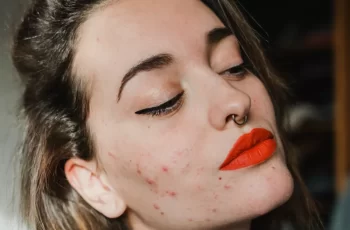
How to Use Niacinamide and Vitamin C
By now, everyone knows how well-regarded Vitamin C is in the beauty world. It has a plethora of benefits for the skin, so it’s no surprise that many people are adding it to their daily skincare routine. Not to mention, Niacinamide also has impressive moisturizing benefits. Of course, you want to use these two powerful ingredients together.
But before you put anything on your face, let me tell you how to use Niacinamide and Vitamin C together. If you do it correctly, you’ll be amazed at the results.
Can Niacinamide and Vitamin C be used together?
As with all skincare ingredients, combining Niacinamide and Vitamin C requires some time and care to avoid unwanted skin irritation or reactions. Increased sensitivity is usually caused by an imbalanced pH level. Yes, using certain skincare products can often feel a bit like a chemistry class. But once you establish a good routine, using a combination of ingredients will improve your complexion across the board.
The question is whether Niacinamide and Vitamin C can be used together. The short answer is: yes, as long as they are used properly. The longer, more detailed answer is that the two ingredients generally have similar effects on the skin, but they compete with each other, often leading to irritation. To avoid this and continue using both, I recommend opting for a vitamin C serum in your morning routine. The antioxidant properties of vitamin C (also known as ascorbic acid) help fight free radicals like pollution, UV rays, and other environmental pollutants that damage the skin as soon as you step out of the house. When it comes to your evening skincare routine, using a serum rich in niacinamide will help counteract the damage and ensure that the skin barrier receives the right amount of moisture and locks it on the surface of the skin. Not only does this help other skincare products penetrate deeper into the skin, but it also helps repair and regenerate the skin while you catch up on sleep.
Should niacinamide be used before or after vitamin C?
As I already told you, you should avoid using niacinamide and vitamin C at the same time to avoid increasing skin sensitivity. Some formulas of certain products contain an impressive blend of both ingredients, allowing you to use one product. It’s convenient and time-saving, but your skin type will determine whether you can use such a potent blend of ingredients.
Instead, it’s a good idea to mix it up in your daily routine. For example, in the mornings when you don’t use vitamin C, you can switch to a product that contains niacinamide. By adding this variety to your daily routine, you’ll find that your skin barrier remains healthy and functioning properly while you get impressive results from this powerful blend of ingredients.
How to layer Vitamin C and Niacinamide?
Before using Vitamin C and Niacinamide together, it’s best to do a 24-hour patch test to ensure your skin is happy with each application. When layering these powerful ingredients, apply the Vitamin C first and wait about 15 minutes between applying the Niacinamide product. This allows the skin plenty of time to absorb the product and feel comfortable before applying the Niacinamide to lock in the skin’s moisture. By layering in this way, you’re giving your skin all the benefits of Vitamin C while ensuring it’s plump, hydrated, and youthfully rejuvenated.
Can I use Niacinamide in the morning and Vitamin C at night?
Yes, you can use Niacinamide in the morning and Vitamin C at night. Both ingredients are very effective and will produce impressive results whenever applied to the skin. Vitamin C is rich in antioxidants and is the perfect ingredient to use at night as it can repair and restore any damage caused by exposure to free radicals. When it comes to using Vitamin C, it often comes down to personal preference, as many people prefer to use a Vitamin C-rich serum as part of their morning routine to enjoy a radiant complexion all day long.
What Not to Mix with Niacinamide?
Believe it or not, Vitamin C is the main ingredient to avoid when using Niacinamide. This is due to the factors I’ve already mentioned, such as: B. Each ingredient will produce similar results on the skin, causing pH imbalance and skin irritation, which is a common side effect.
However, if both ingredients are used correctly, you will reap the benefits without the drawbacks. However, if you have any further concerns about using Vitamin C and Niacinamide together, you should consult a doctor or dermatologist to further ensure safety.
Can I Use Niacinamide Every Day?
Anyway. In fact, using Niacinamide twice a day allows the surface skin barrier to protect the skin from daily environmental damage. When the barrier is working properly, you will see all signs of aging (such as fine lines and wrinkles), sun damage (such as dark spots and hyperpigmentation), and signs of loss of elasticity disappear.
Niacinamide has hydrating properties, meaning it draws moisture around your face and locks it into your skin, keeping your complexion hydrated and healthy all day long. Be sure to read our blog post on niacinamide and its effects on your skin to learn more.
Is it better to take niacinamide in the morning or at night?
Since niacinamide can be used twice a day, you’ll benefit from using this powerful and clever ingredient every time. By keeping your skin in its healthiest state, you’ll get the best results from the product, improving your complexion overall. Another benefit of niacinamide is its ability to regulate your skin’s natural sebum production, which helps control potential breakouts like pimples, blackheads, and blemishes. This is another reason to use niacinamide morning and night for balanced, healthy skin.
What not to take with vitamin C?
A few years ago, the only form of Vitamin C used in various skincare products was notorious for being unstable, often causing redness and irritation on the skin. Today, skincare formulations have come a long way and Vitamin C no longer has a reputation for being unstable.
With this in mind, there are several ingredients that should not be used with Vitamin C, which is still known for its benefits for the skin. The following ingredients should not be used with Vitamin C, but can be used in your daily routine if the intervals between uses are long enough or at different times of the day.
Ingredients that should not be mixed with Vitamin C
Retinol
Benzoyl Peroxide
Alpha Hydroxy Acid (AHA)
Beta Hydroxy Acid (BHA)
If you want to learn more about Vitamin C and how to incorporate it into your daily routine, read our dedicated blog post.
Today I hope I have explained to you in more detail how to use both Niacinamide and Vitamin C in your daily skincare routine. If you have any questions, visit me on Instagram.


